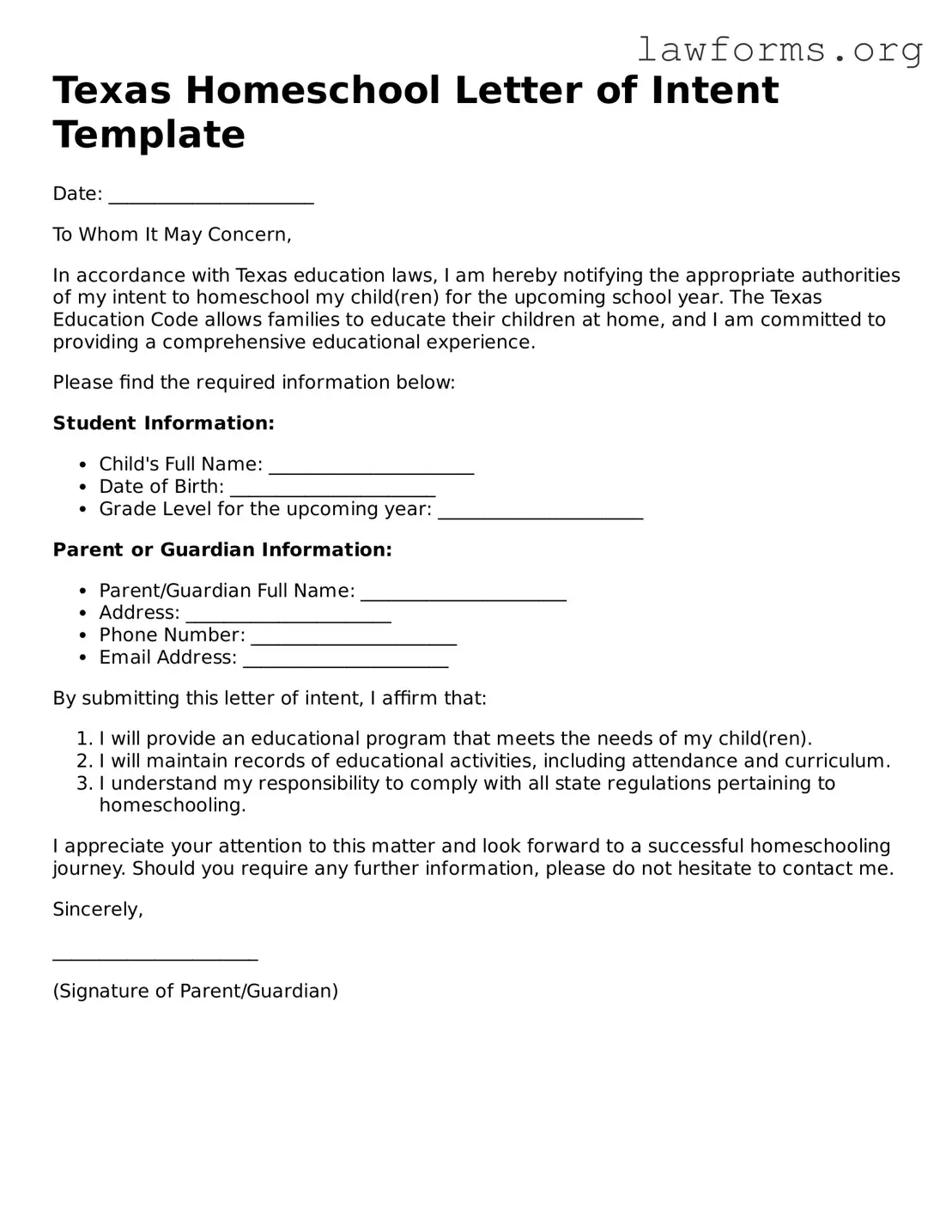Texas Homeschool Letter of Intent Template
Date: ______________________
To Whom It May Concern,
In accordance with Texas education laws, I am hereby notifying the appropriate authorities of my intent to homeschool my child(ren) for the upcoming school year. The Texas Education Code allows families to educate their children at home, and I am committed to providing a comprehensive educational experience.
Please find the required information below:
Student Information:
- Child's Full Name: ______________________
- Date of Birth: ______________________
- Grade Level for the upcoming year: ______________________
Parent or Guardian Information:
- Parent/Guardian Full Name: ______________________
- Address: ______________________
- Phone Number: ______________________
- Email Address: ______________________
By submitting this letter of intent, I affirm that:
- I will provide an educational program that meets the needs of my child(ren).
- I will maintain records of educational activities, including attendance and curriculum.
- I understand my responsibility to comply with all state regulations pertaining to homeschooling.
I appreciate your attention to this matter and look forward to a successful homeschooling journey. Should you require any further information, please do not hesitate to contact me.
Sincerely,
______________________
(Signature of Parent/Guardian)
